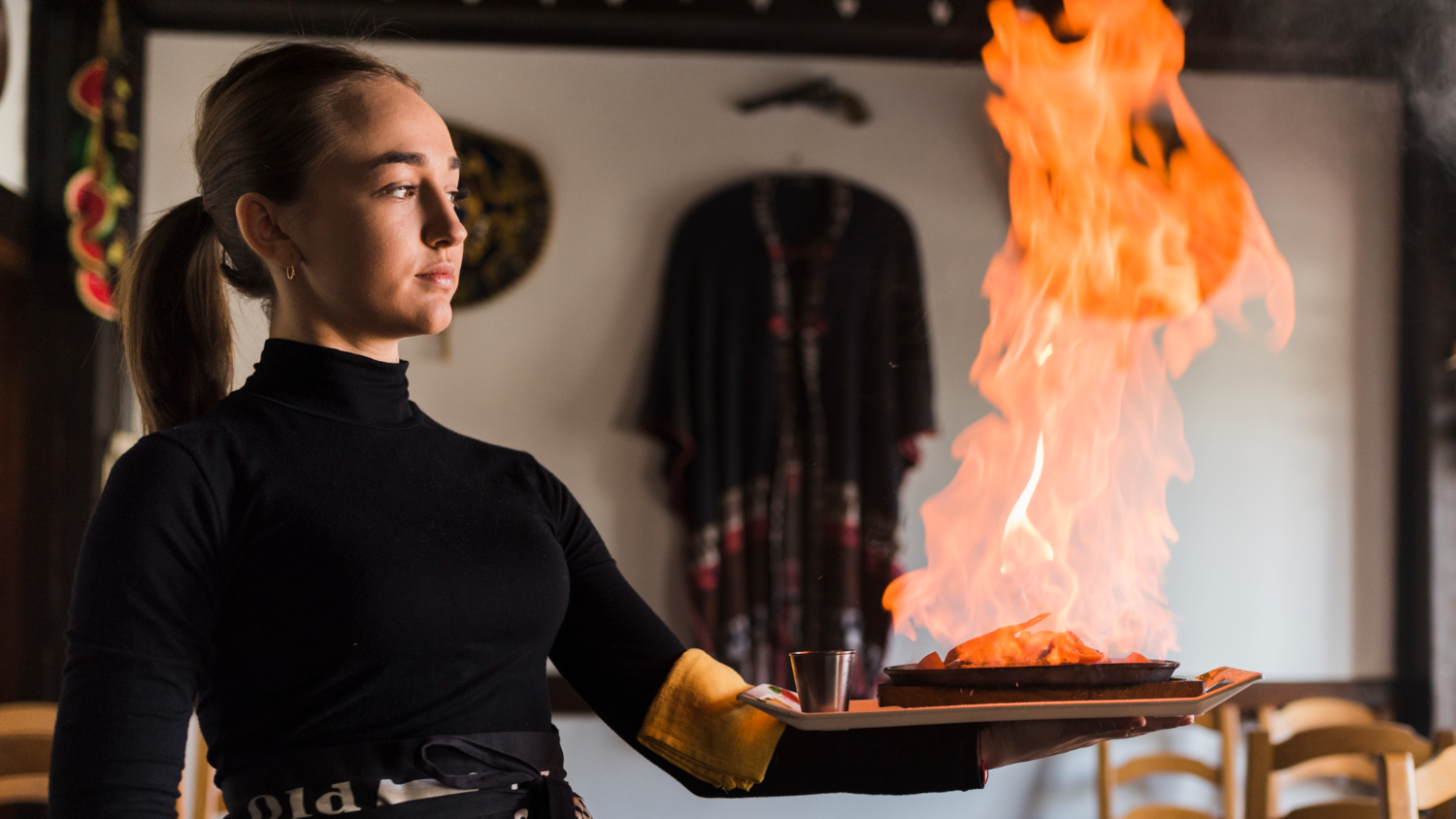Mastering art of flambeing: Safe guide for your kitchen
 Illustrative photo (Photo: Freepik)
Illustrative photo (Photo: Freepik)
Often in movies, you can see food being set on fire. This technique not only looks impressive but also adds an elegant finishing touch to desserts and meat dishes, according to the Shuba website.
Flambéing is the preparation and presentation of food by pouring alcohol over it and setting it on fire. Of course, the food itself does not burn; instead, the alcohol evaporates. Typically, strong alcoholic beverages with high alcohol content are used for this technique.
Flambéing, apart from being a spectacular sight, can enhance the aroma and taste of the dish, as well as mellow down the harshness of raw strong spirits. While the alcohol burns off, it can add smokiness and leave behind a liqueur-like taste.
It looks very impressive: what is flambéing and how to safely do it in your own kitchen.
Selecting the right alcohol
Choosing the right alcohol is essential for this technique. Follow these recommendations:
For classic flambéing, you can use liqueurs with high alcohol content or mix liqueurs with stronger spirits.
Liqueurs with a strength of 80 are considered the best choice for flambéing.
Liqueurs with a strength above 120 easily ignite and are considered dangerous.
If there is no liqueur available, you can use any strong alcohol: rum, brandy, cognac, whiskey, gin, cherry brandy, or apple brandy. Beer, champagne, and most table wines are not suitable.
 Photo: Freepik
Photo: Freepik
How to safely flambé food at home
It's important to remember that flambéing is the final step. Special cookware isn't required for this method, although ordinary Teflon coating is unsuitable, and the handle should be fire-resistant.
For flambéing, a shot glass of alcohol will be sufficient, as adding too much can overpower the taste, and the flame can become excessive.
Pour the alcohol into the pan using a ladle and ignite it with a long match. Once the alcohol burns off, the flame will extinguish, and the dish will be ready to serve.
If the dish doesn't ignite, it might not be warm enough. Cold or chilled alcohol won't ignite. Avoid letting the alcohol boil, as the alcohol will burn off, and it won't ignite.
How to Avoid Mishaps
To avoid burns, follow these rules:
- A large skillet or a deep, wide pan with rounded sides and a long handle is best suited for this method.
- Ensure there is enough space above the pan.
- Always remove the pan from the heat before adding the liqueur to prevent splattering.
- Never pour alcohol into the pan near an open flame.
- Don't leave the bottle of alcohol open near the stove.
- Never pour alcohol directly from the bottle into the pan.
- Once the liqueur is added to the pan, don't delay ignition, or the food will absorb the alcohol. Ignite using a long match.
- Never lean over the dish or pan when igniting.
- Never extinguish the flame with water.
- Keep a metal lid nearby in case the fire gets out of control to smother the oxygen supply.

